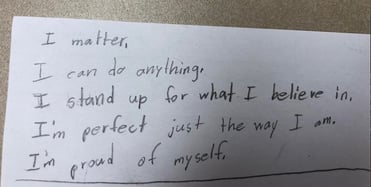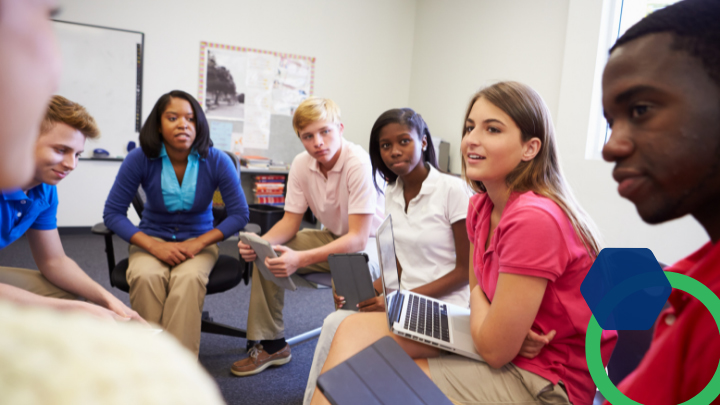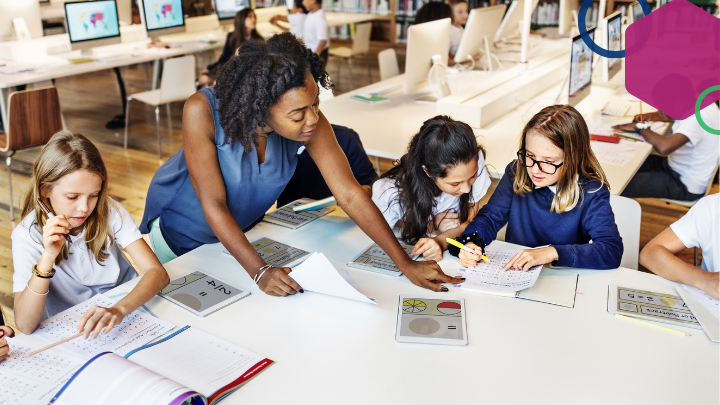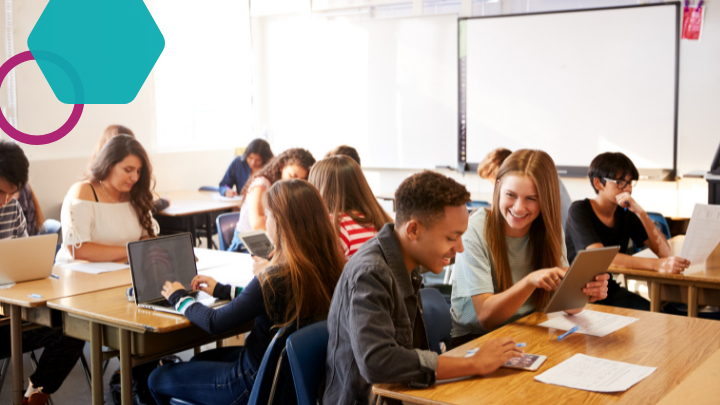As educators and leaders, we have a lot on our plates and closing learning gaps can feel like an overwhelmingly large task, especially part way through the school year. In addition to academic demands, students are struggling with global trauma that is impacting their social-emotional well-being.
We can’t make trauma go away. According to research published in 2019, between one half and two-thirds of all school-aged children experience trauma, a factor known to impact students’ ability to learn and thrive. With the events of the past few years, that number is expected to rise considerably. What we can do is keep a student-centered focus on the needs of all learners, including those affected by trauma, and use trauma-informed teaching strategies and resources that minimize those obstacles and accelerate growth. Read on for some of the trauma-informed strategies I have found most useful for closing learning gaps–especially partway through the school year. It’s never too late!
Prioritize relationships
One barrier many students face in learning is trust and safety. With so much unpredictability between school and home in the last few years, many students need to rebuild their relationships with teachers and peers. When students feel safe, they can build a sense of trust, which allows them to let go, take risks, and thrive. This means we must continuously prioritize relationships every day.
Pay attention to transitions
Transitions are often times where students may feel unsafe or disoriented, so thresholding to greet students at the door can help you provide some consistency and continue to build that relationship with each student. In a remote or hybrid environment, you can still make an effort to greet every student when they enter the room.
Make students feel seen
If you are ready to get curious about what could be holding your students back, try “I Wish My Teacher Knew.” This strategy helps you to get to know your students on a more personal level and provide the best learning environment to help close those gaps. Using Google Forms is a great way to do this virtually.
Build classroom community
Circle up: community conversations is another strategy to help every student feel valued and to build community in your classroom. These circles can help you address challenges that could be preventing learning.
Consider classroom management
Reflecting on classroom management can be extremely impactful in closing learning gaps. By focusing on community building instead of compliance, as well as taking a restorative approach to escalating behavior, students will feel safe even when the learning environment shifts. This allows learning to get right back on track.
Reflect on unintended impact
Classroom management reconsidered is a great place to start that reflection process so you can create or refine practices that support all learners in an inclusive learning community. One area to think about is student consequences because these can take students out of the classroom, which can result in larger learning gaps.
Practice de-escalation
A huge part of classroom management is figuring out how to deal with escalating behaviors. De-escalation skills are a lot about practicing and refining our own ways of staying calm in these moments (because they can be stressful!). However, our students feed off our energy; when we stay calm, they will stay calm and feel safe and ready to learn. I like to tell the teachers I coach, “where focus goes, energy flows and grows.” If we focus on staying calm and trying to remain positive, our students will feed off that and we can get back to learning quicker and more smoothly.
Leave space for emotions and reflection
As the year winds on, excitement about learning can fade.That middle part of the school year can be unknown and uncertain, which can cause a lot of emotions. If we don’t leave space for emotions, these feelings can bubble up to the surface and escalate. When students are emotionally escalated, they will have trouble accessing stored information from the brain and taking in new information. This is why big emotions can be such a barrier to learning.
Explore mindfulness techniques
Mindfulness techniques only take a few minutes but can be extremely powerful in identifying and regulating emotions. In a remote or hybrid environment, showing a quick mindfulness video can be a great way to center students before a lesson. Learn more about implementing mindfulness in the classroom here.
Encourage self-awareness
Provide modeling and guidance around self-awareness moments for your students. When you allow students time to pause and identify what makes them upset, they can make better decisions moving forward, which leaves more time for learning. Learn more about setting the stage for self-awareness in your classroom here.
Try gratitude exercises
We have all heard of gratitude, but research shows that simple gratitude exercises really do improve well-being. Gratitude was one of the simplest but most influential practices that I implemented in my classroom. By working to improve the mental and physical health of our students and ourselves, we can create a safe environment and open the doors to learning. Try a gratitude sharing exercise in your classroom. In a remote or hybrid environment, you can use Google apps like Padlet or Jamboard to share gratitude digitally.
Help students believe in themselves and take ownership
One of the biggest barriers to learning and closing gaps is mindset. We have to believe our students can make that growth and in turn, help our students believe that they can make that jump.
Recently, I was talking with a teacher that I coach and she was expressing how she hopes to teach her students that they are in charge of their learning. What a powerful skill and mindset to adopt! As teachers, we can be facilitators and guides for our students, but they have to take that step. Yet, they may need a little bit of support along the way. Ultimately, when students are in the driver’s seat and believe they are capable of tackling challenging work and improving, they feel a sense of purpose in their learning and are more motivated to grow.
Start with affirmation statements
One of the ways I shifted my own mindset and my students’ was through affirmation statements. The beautiful thing about affirmations is that they can be unique to every student. Each student can choose the affirmation(s) they need and feel passionate about. We can also choose our own affirmations to model this practice for our students. When I taught remotely, we often used the chat feature to share our daily affirmations. One of my favorite class affirmations to help empower students to grow is “We can do hard things.”
Set goals
In order to close learning gaps, we have to help our students know what they need to work on. Goal setting and reflection can help students build a pathway to close gaps on a schedule, whether it’s by the end of the quarter, semester, trimester, or school year. This is another strategy I like to tell teachers to model and do with their students. As adults, we are always trying to grow too. Show that to your students. In my classroom, I like to pair goal setting with student conferences so that I can continue to build those relationships with my students individually but also help them to review data and growth and set new goals.
Celebrate wins
Once students start believing in themselves and setting goals, it’s even more motivating to have a place to celebrate that hard work. A positive news board can encourage enthusiasm and accelerate learning. Even the smallest wins can be posted! If you are in a remote or hybrid environment, you can choose a digital space where you and your students can share what they are proud of. It can even be done verbally.

Examples of affirmations from my past students
As you look ahead to the remaining months of the school year, reflect on which areas might need the most growth. What has recently been challenging for you and your students? Is it relationships and community in your classroom? Is it classroom management? Is it handling tough emotions or outbursts? Or, is it motivating your students to take charge of their learning?
There isn’t just one strategy or answer. There are many teaching and differentiation strategies that can accelerate growth; however, we can’t close learning gaps without supporting our students’ social-emotional needs first. By keeping our teaching techniques trauma-informed, we can make a big impact.








